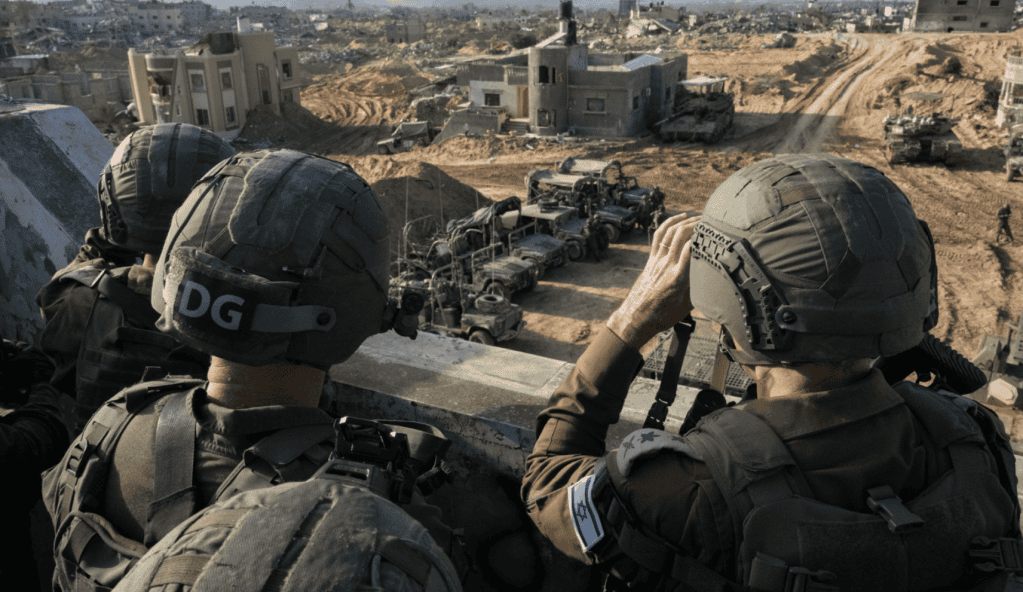
The Israel Defense Forces carried out strikes deeper than usual inside Lebanon following a Hezbollah drones attack on Israel on January 25. One Hezbollah UAV fell near Kfar Blum in northern Israel, southeast of Kiryat Shmona on the border with Lebanon. Israel evacuated more than 80,000 people from this area in October due to Hezbollah attacks.
The IDF said on January 25 that “fighter jets struck a series of Hezbollah military targets in the areas of Tyre and Mghayre in Lebanon. Among the targets struck were military compounds and sites used by Hezbollah’s Aerial Unit.” The IDF also struck a “military airstrip” used by Hezbollah in the mountains of Lebanon near the Syrian border, approximately 15 miles north of the Israeli border. Israeli Defense Minister Yoav Gallant highlighted this site during a September 2023 speech at Reichman University in which Gallant said Iran was behind the construction of the airstrip. “In the pictures, you can see the Iranian flag flying over the runways, from which the ayatollah regime plans to operate against the citizens of Israel,” Gallant said.
Iran has sought to move drone or UAV capabilities to its proxies in Iraq, Syria and Lebanon over the last several years. The Alma Research and Education Center which covers security threats to northern Israel estimated in 2023 that Hezbollah had 2,000 drones. Since October 8, Hezbollah has used drones in dozens of attacks on Israel. Hezbollah has also launched more than 2,000 rockets and numerous anti-tank guided missile attacks on Israel. In recent weeks, Hezbollah has sought to target more sensitive targets in Israel, including a facility on Mount Meron, Israel’s northern command, as well as an Iron Dome battery and a surveillance site.
Over the last week since January 21, Israel has carried out a number of strikes in Lebanon in response to Hezbollah threats. On January 23, the IDF said that “fighter jets completed a series of strikes on terror targets in Lebanon, including a military asset used by the Hezbollah terrorist organization and operated by Iranian forces. Additionally, a military compound in which Hezbollah terrorists operated was also struck. Throughout the day, IDF soldiers struck in several additional areas in Lebanon.” Israel also struck terrorist infrastructure near Yaroun in southern Lebanon. According to the IDF, it used artillery and tanks to strike areas inside Lebanon near Tayr Harfa and Ayta ash Shab, as well as “terror infrastructure in the area of Kfarkela, as well as a Hezbollah observation post in the area of Blida in Lebanon.”
In addition, Israel continued to increase pressure on Hamas in southern Gaza. Israel Chief of Staff Herzi HaLevi travelled to Khan Younis where he conducted a situation assessment and met with IDF Southern Command head Maj. Gen. Yaron Finkelman as well as with the head of the IDF’s 98th Division, Brig. Gen. Dan Goldfuss. The 98th Division has spearheaded IDF operations in Khan Younis since early December. The Division is made up of commandos and paratroopers and works with the Givati infantry and the 7th armored brigade in its operations against Hamas in Khan Younis.
HaLevi’s trip to Khan Younis comes a week after his visit to northern Israel. He said that the likelihood of war in northern Israel is now higher than it has been in the past. HaLevi’s two trips highlight Israel’s ongoing operations on two important fronts while IDF strikes in Lebanon showcase deeper operations against Iranian-backed Hezbollah.







